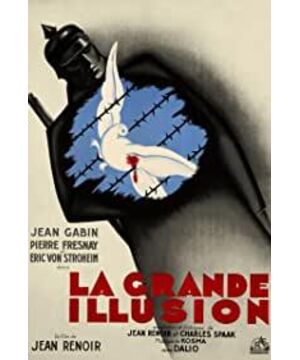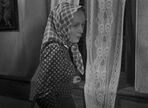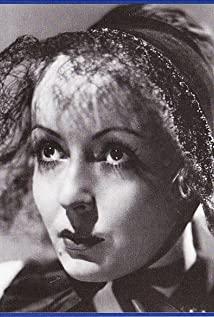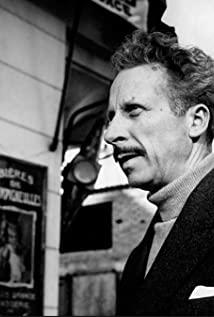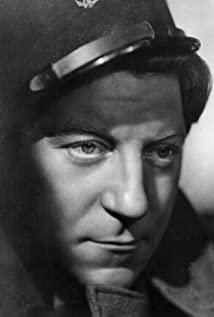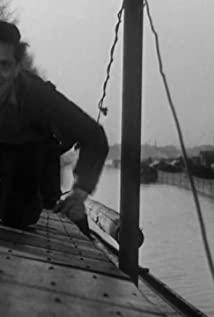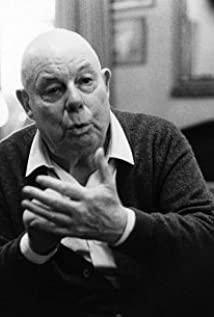1. This movie stands as a moment in film history because it is so skilful, so genius, so accurate in its use of the film's mise-en-scene. It is through the success of the mise-en-scène that Renoir creates a space of continuous, real, poetic realism in this film.
2. Under the time-space continuum created by the genius mise-en-scène of The Great Disillusionment, it very accurately captures the social information of that era that is still relevant to us today, about aristocratic society, about hierarchy, about class relations, and about Europe. History has been devastated and transformed in the two world wars.
"The Great Disillusionment" is undoubtedly the most brilliant genre in the history of French cinema - poetic cinema, or a masterpiece of poetic realism, and it is also a very important moment in the history of cinema. In this film, the time and space of the film, the relatively complete structural relationship between the film and time and space, and the mutual relationship between the film and time and space form a so-called "space-time continuum". In this film, the "space-time continuum" is perfectly presented through the movement of the camera, through the relationship between the sound of the movie and the picture of the movie, and through the element of "voice-over".
"The Great Disillusionment" has been called the first great prison break film in cinematic history, and it can even be said that it opened up a very fascinating film and television story sequence, which is about prison break. In this story, the words of the protagonist, the French aristocratic officer Berdio, have even become some kind of golden sentence or famous saying. In the movie, it is said: "What is the purpose of the prisoner of war camp, it is used to escape from prison? !" Of course, the sentence later became "What is a prison for, it's for escape!"
"The Great Disillusionment" is not just a prison break tale, it's also a great moment of confronting the abyss of history while hoping to discover life's faint, sometimes charming warmth. Slightly different from the movie we selected earlier in "Moments in Film History," this one was a hit at the time of its release, a hugely popular one.
This movie is a moment in film history because it uses the film's mise-en-scene so skillfully, so geniusly, so accurately. The word mise-en-scène comes from theatrical art. On theatrical stage, mise-en-scène refers to the relative displacement between characters and between characters and props, through the relative displacement between characters and characters and between characters and props. A change of position, it becomes an effective expression of the dramatic language on the stage. But when this term is involved in the art of film, it adds a level, and it is also a more important level. It is a basic component of film language, that is, the scene scheduling in film not only includes the relationship between characters and characters The change of the relative relationship on the screen, and more importantly, it includes the change of the relative position between the camera and the character, the relative relationship between the camera and the character, the change of the relative position, that is, several ways of moving the camera : Pushing, pulling, shaking, moving, raising, lowering, and the relative relationship between characters, scenes, spaces, and props, in fact, this has become the most important basic way of film language expression.
We call a film director a "film director". In today's film director theory has had a wide range of influence around the world, we will think that the director is the most important core figure of the film. However, in another concept, the producer is the most important central figure, which means that the film is dominated by capital. Therefore, we also call the core character of the film "producer" or "film maker", that is, "the person who makes the film" or "the producer of the film". However, in many countries in Europe, film directors are called "misemen". In other words, a film director's job is a mise-en-scene job, and the core of film language is mise-en-scene.
About fifteen years ago, I watched this film over and over again, and this time to share with you, I still have that very excited and excited feeling when I rewatch it because I go through the film again and again The moment in history, seeing the moving camera, seeing the panning of the camera, how the camera lifts and lowers to show the scene and the characters, see in a 1937 film, Jean Renoir, also the famous Impressionist painter Reno Son of Ah, how did this film show us a complete, real and continuous space, even though we all know that this real, complete and continuous space in the film is often Movie magic or movie hallucination. And it is in this film that Renoir successfully created such a continuous, real, so-called poetic realism space through scene scheduling. So an important point I want to share with you is how mise-en-scène, as a film language, was geniusly created and geniusly used in this film.
In this film, probably the most sensational and effective scene is the scene at the prisoner of war camp's Christmas night party, when the French soldiers as prisoners of war dressed up in women's clothes and performed a comedy show on the stage, when the French soldiers once again When the news of the recapture of an important French city came, suddenly, the camera used a slightly tilted shot, which showed us that the French soldiers in women's clothes lost their hoods, raised their heads and began to sing Marseillaises. Then the camera pans to the left, pans over the soldiers on stage, men's, women's, who used to be funny, funny, then pans down to the French prisoners of war offstage, who stand up with their heads up and their chests out , the singing voice is so neat; the camera pans over again - this is a very rare 360-degree pan because it pans the whole scene, and when it gets close to 360 degrees, it pans to the point where it was shot with an overhead lens. The German officers who appeared in the box position, at this time, they naturally appeared in the slightly overhead position, and they faced the anger, embarrassment and embarrassment when they faced the French prisoners of war full of victory pride and patriotic passion. resignedly. Then we see them get up and leave in the camera, and the camera continues to pan to the first French soldier who leads everyone to sing the Marseillaise. The whole scene clearly shows the relationship between the hostile countries in the war, the prisoners of war and the guards of the camp.
One of the most important elements of this film as a great moment in film history, and one that is relished and discussed over and over in all textbooks on film history, film art, film language, is its use of voiceovers.
I like to say that film art is built on a stable parallelogram whose four endpoints are sight, hearing, time and space.
If we really want to give a definition of film, then film is an audio-visual art, and we can also say that film is a time-space art. When we say that film is an audio-visual space-time art, we first mean that film language is composed of two main parts, that is, the visual language of film and the auditory language of film, that is, the picture of the film and the sound of the film. And we say that film is a time-space art, that is to say, film is an art that is always completed in the interrelationship of time and space.
Very professional film textbooks will say that this film successfully shows us how to create a time-space continuum of film. The so-called space-time continuum of movies is through the very successful use of the relationship between sound and picture (the relationship between sound and picture), to be precise, the use of voice-over, to create a kind of spatial expansion and the continuity of space and space in the process of picture time display. build.
In our daily life experience, the visual experience is discontinuous, you close your eyes and the outside world disappears, but our auditory experience is continuous, because we cannot close our ears, even in sleep, you You will also be disturbed by the surrounding ambient sounds, and even voiceovers will enter your dreams. This is our everyday experience, but it is interesting that there are several important passages in the history of world cinema, one of which is: Cinema is the Great Dumb. Movies are just silent movies, and the only language of movies is pictures. Therefore, during this period, the visual language of the film began to be developed, and it has always been a field of continuous development until today, while the sound of the film was ignored on the contrary, and was relegated to sound effects, as an accessory to the picture. Twenty years after this film, in most Hollywood movies, ambient sound is still used only as an effect, and in this film, Renoir accurately uses the spatial environment and sound to create a realistic environment, a historical situation , the story scene, and the interrelationship between the sound and the picture in the film is also a very important factor in the humour, the inherent, restrained dramatic tension that has always been in this film.
In the two scenes in the prisoner of war camp, in the first scene, the picture of the protagonist is the picture of the prisoners of war, but at the same time, the sound of the soldier's performance enters this picture. Then the camera moves, pans over, and we see the source of the sound, the German soldiers in action. It is very interesting that, as a master, Renoir very accurately grasps the richness and diversity of information in each scene, that is to say, this is not only some German soldiers practicing, but also a group of very young, almost children. German soldiers, then it indicates to us that the war has reached this period, and the Germans have begun to use child soldiers or student soldiers. The camera continued to shake, the German soldiers in the drill were drawn, and the sound continued as new characters and new scenes were shown again.
We see that still picture in every textbook, the window of the POW barracks in the slightly tilted shot, our protagonist looking out the window, when the noise, footsteps and music in the foreground outside the picture enter Picture - at this time, Hollywood still uses the cut shot, I am watching, and then show you what I am watching. In this film, Renoir uses continuous shots, moving shots and the relationship between sound and picture, voice-over, come Very rich, varied, and creative to compose the visual effects that can happen with a cut shot.
A basic point that I have accepted and believed since a very young age is that it is absolutely impossible to separate content and form in a work of art. In a work of art, there is neither form without content nor without Content with form.
In a saying of Russian formalism, any work of art is like an onion, you always think that some skins can be peeled off to get its core, but if you peel off a layer of skin, it is still a layer of skin, you peel to the end It's still skin when it's a layer. But that's not what the derogatory formalist term ostensibly suggests, that it's really "skin", because we all know that every layer of skin on an onion is its pulp, its contents . Although people habitually divide works of art into content and form when we discuss them, in fact, every grasp of the content of a work of art is also a perception of its form. Every form of analysis is necessarily an understanding of its content.
What we talked about before seems to be in the language of the film, it seems to be a form, it seems to be external, and what we are going to discuss next is the content... In fact, this is not the case, we just look at the same object from different sides, or Say that we also touch the text of the film, to recognize the charm of the film that still exists to this day.
The history that this film records, confronts, and reproduces is one of the great tragedies of the 20th century—the First World War. Once again, we're going to look at the year of this film, 1937, a story about World War I shot on the eve of World War II, or at a moment when World War II was already beginning in some way.
Some film critics say that this movie is an elegy, and the movie contains such a kind of sadness, such a kind of retrospect, but what I say will cause a great misunderstanding to friends who have not seen this movie, because This movie is actually quite humorous, quite bright, and this feeling is actually an echo, a reverberation in your heart when you finish watching this movie.
People will say that this is an elegy, but in fact this elegy is also an elegy for an era, that is, looking back at World War I on the eve of the outbreak of World War II, and even the disaster of World War I contains certain scenes that will not be repeated. In the story we see the friendship between the German noble officers and the French noble officers, we see that the war suddenly and strangely becomes a Santa's sack, which makes it seem that there is a certain kind of equality between soldiers and comrades, although Those who are in this equality know in some way that this equality is ephemeral, temporary.
World War I has begun to destroy the so-called graceful years that the European world once had, but in the movie scenes of World War I, in the historical scenes of World War I, such graceful years still seem to have some kind of subtle afterglow, and World War II is about to Come, everything will be burned with extreme cruelty, so I say that when people watch this movie, they will grasp this so-called "content" intuitively, and then they will discuss the meaning of this elegy, and people will feel more strongly What has happened is the so-called degeneration of aristocratic society. Mention will be made especially frequently of two antagonists like Berdio and Lofenstein, the kind of sympathy between a warden and a prisoner or prisoner of war, that deep mutual identification and mutual understanding. In love, people talk about that famous conversation about the pot of geraniums in Löfenstein's room, a pot of geraniums in a barren land where only ivy and nettle can grow.
In this film, this is only one of the themes, and this film has become an immortal masterpiece in film history, making Renoir a great film director, a great film writer, and the first in film history. This is a prison break story, among the greatest prison break stories in the history of movies, it actually captures the extremely rich and diverse social information of that era that is still meaningful to us today, about aristocratic society, about hierarchy, about class relations, The history of Europe was devastated and transformed in the two world wars.
There's a very interesting movie scene that we can look back at with you, and that's when the character Lofenstein comes on, and that's an example of a mise-en-scene, but it's also a very interesting descriptive shot that we'll call the movie, the movie description paragraph. The shot starts from the scene of the crucified Jesus in a church space, and then the camera descends, and after the entire statue of the victim falls to the portraits of the Kaiser and the Empress at the foot of the statue, and then continues to pull down, We see a spotless, perfectly tidy bed with snow-white sheets, and then the camera pans, past the highly decorative, aristocratic, historic vanity mirror, and then to After panning through a long long table, the various accessories of German officers were meticulously and orderly placed on the long table, and then the camera panned again, and we saw a man who resembled an orderly and a servant was on the way. Carefully handle a pair of white gloves, it uses such a space to make the character of Lofenstein have a strong presentation and contrast before he appears. All the questions we will extend, about this character, about The character of this character, about the story situation, about the aristocratic society, about the war, are actually displayed in such a layout, because it is a dissonance.
The next thing that is very interesting is that the orderly appears again in the camera. He first reported that the white gloves are two left hands. This is a detail and irony that Jean Renoir is very good at using. It is called "contrast cute" in the popular saying. , that is, the white gloves are Yishun, and then he poured the coffee, then he was holding the coffee, the camera followed him walking towards the table, then the camera panned to a close-up of the coffee, took the coffee cup with one hand, and walked along the With one hand up, our hero appears before us. Of course, his image is very striking. He wears a neck brace and his neck is fixed, which not only gives him a very stereotyped and stereotyped image of German officers, but also draws out the following dialogues. It was explained that the war almost destroyed his entire body, destroyed his health, and almost destroyed all his enthusiasm for life.
"The Great Disillusionment" as a business card in the history of film, as a moment in film history, in fact, it also contains a very important issue about film, about film art, about the possibility of film, or it triggered this issue, Or that it has practiced this issue, that is, what is the story of a movie, or what is the most cinematic story, and how the drama of the movie can be reflected. Usually people think that the drama of a movie is the appearance of very dramatic events, or very external conflicts, or very likely what constitutes a spectacle, and this film has been very successful in showing us about the first War of the Worlds, a prison break story, it's not an action movie, but it's still very captivating.
The most important fascinating aspect of this film is the subtle relationship patterns between the characters that are shown through the quiet character-to-character relationship, the characters' body language, the camera movement, the mise-en-scene.
A movie-loving audience may get a very knowing experience in the whole movie, because everything is not directly, 100%, over-expressed, and the whole story has that very full charming side , and it is expressed in a way like the tip of the so-called iceberg at sea.
The story contains two large paragraphs. The first big passage is the passage of the first prisoner of war camp digging a tunnel to escape, the second passage is that they were imprisoned as the stubborn, incorrigible, worst prisoners in a 12th-14th century, a megalithic castle, a In the inescapable space, and the story of the ultimate successful escape.
It evokes an important moment in film history or a display of two possible contexts for film art, film narrative, when the voice appears, when the great mute speaks (1927 The King of Jazz). film, the soundtrack appeared on the film of silent film for the first time), there was a huge debate, there were two aesthetic tendencies, in fact, it was also a disastrous moment in the history of film in a sense, it was the future Whether the sound film is closer to the novel or closer to the drama. In fact, the choice of Hollywood and commercial films is theatrical. And it is the French poetic cinema and Bresson's Diary of a Country Priest that we are about to discuss that show us the narrative affinity between the audiovisual art of cinema and the mature art of fiction in the nineteenth century. How a literary narrative can construct a beautiful movie and a beautiful movie story, so in The Great Disillusionment, this kind of drama is built not only on the external plot but also on the character, The inner grasp of the characters is another very important basis for this movie to be regarded as a famous film in film history.
When the filming of "The Great Disillusionment" was completed and put on the film market, it greatly angered the Nazi Third Reich at that time. It was banned by Nazi Germany's propaganda minister Goebbels, the most famous war madman in World War II. , Jean Renoir became a public enemy of Germany. But the more interesting tidbit of film history for me is that the original copy of this film was once taken by Nazi Germany and tried to destroy and mothball, but when the Soviet Red Army conquered Berlin, they regained the original copy of this film copied and brought it back to the USSR. It was the first time I heard that a film could be such a precious trophy to be acquired and protected, so it wasn't until after the collapse of the Soviet Union in the 90s that the French film industry was pleasantly surprised to know that an original copy of the film existed. , which once existed in the Soviet film archives and film museums.
This story is a tidbit, and seems to be a very revealing or prophetic story. We often think that movies are sideshows, movies are entertainment, and movies are one-offs. I often joke that this year's popularity is next year's classic, and the next year's nostalgia. You won't remember this movie in the fourth year. Movies, but like "The Great Disillusionment" and many excellent movies, it will actually continue to survive as the most precious and valuable historical treasure.
So what I have always wanted to share with you or will continue to share with you during this discussion is how do we realize that movies are under multiple coordinates and multiple positioning, movies as art, movies as culture, and movies as The history of social customs, film as an ethnography of social history, film as the creation of beauty or film as the outline of the soul, of course, film can be used as entertainment, as a sideshow, in fact, film has a variety of possibilities. And this movie is very far away, and for me it was also a movie of my parents, but it seems to be an interesting example of this.
dictionary:
1. Russian Formalism
A trend of literary criticism that prevailed in Russia from 1915 to 1930, opposed the traditional way of dealing with narrative materials before the Russian Revolution, and instead paid attention to the importance of artistic language forms. in form. The form here mainly refers to the language form.
2. Voiceover
Voice-over refers to the off-screen use of sound in a film, that is, sounds that are not directly produced by people or objects in the picture, but come from outside the screen. Narration, monologue, and commentary are the main forms of voice-over.
View more about La Grande Illusion reviews


